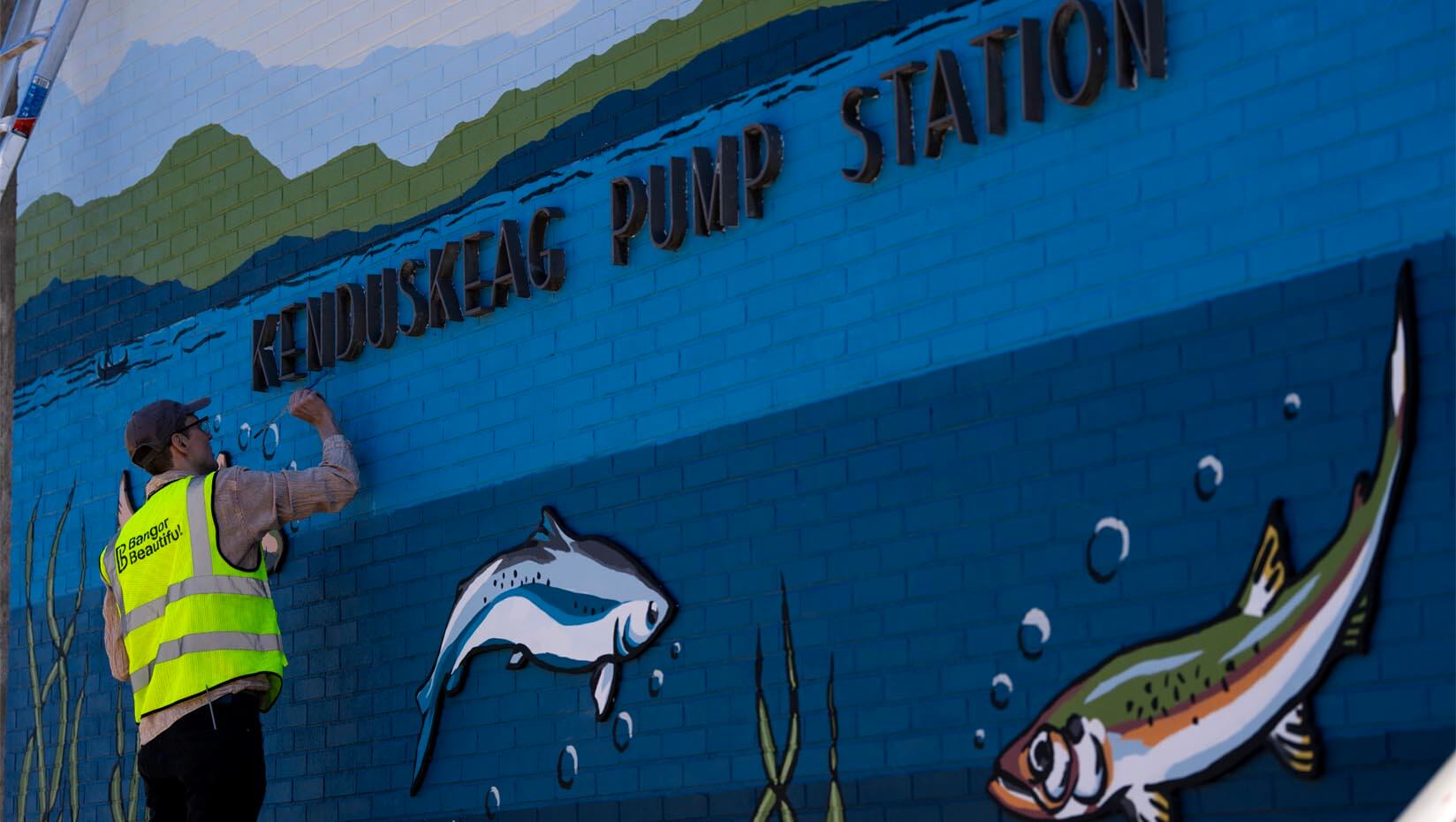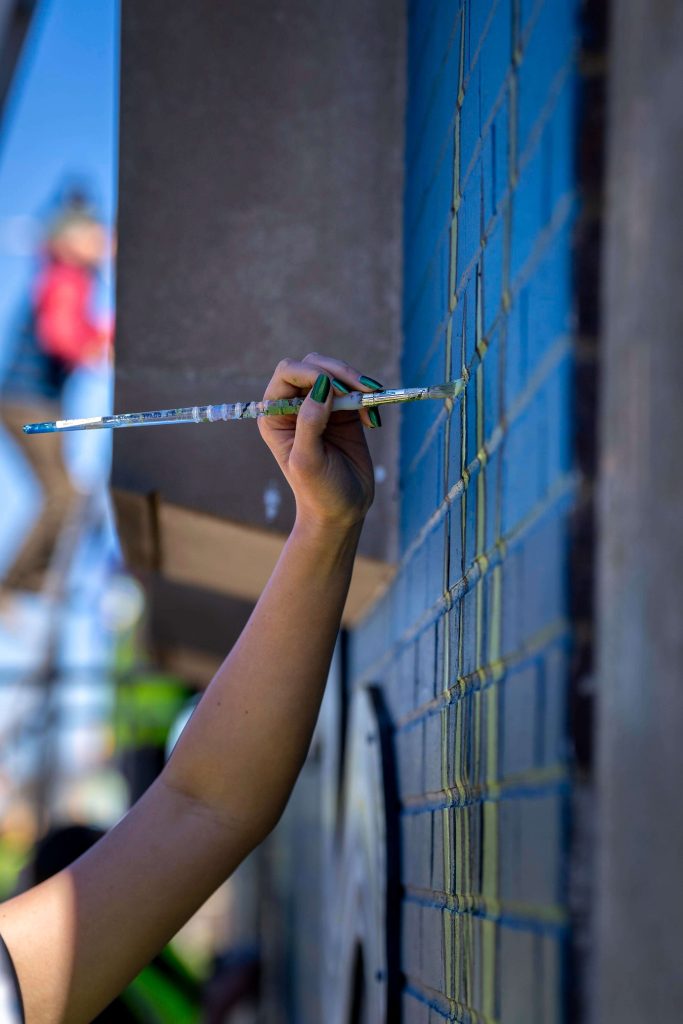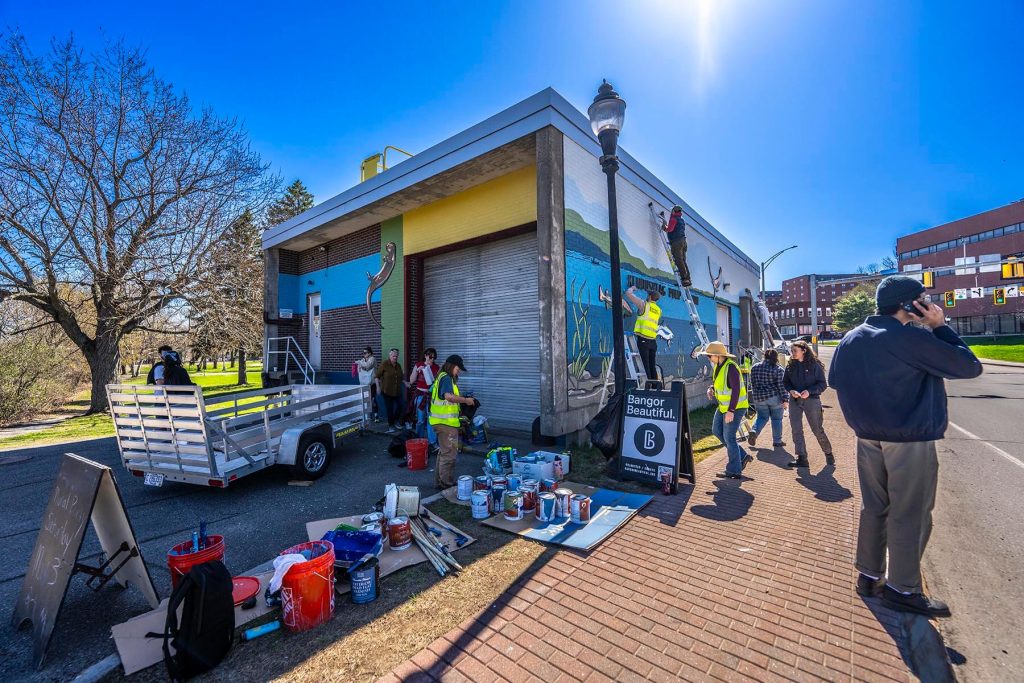
UMaine students create river ecology mural on Bangor pump station
University of Maine art and wildlife ecology students have designed an educational mural on the Kenduskeag River Pump Station in Bangor that highlights the importance of freshwater mussels, migratory fish and river ecosystems.
Intermedia Programs and the Department of Wildlife, Fisheries, and Conservation Biology collaborated with Bangor Beautiful and city officials on this project.
The mural serves as a visual representation of the freshwater ecosystem at the intersection of the Kenduskeag Stream and Penobscot River. It features depictions of various species like turtles, fish and frogs that will be cut from wood to give the mural a 3D element.

Students painted all four sides of the water pump station, located at the corner of Washington and Broad Streets in downtown. The undergraduate wildlife ecology students conducted research into the ecological aspects of the mural, while the graduate intermedia students have designed the creatures that will be displayed. Both classes cut the wooden cutouts and painted the different wildlife that will go on the mural.
Sequoia Dixson, a graduate ecology student, is one of the students who have studied the animals in the design.
“When thinking about designing this mural, we wanted to make sure that it was ecologically accurate and really depicted a lot of the species in the Penobscot River,” said Dixon. “So being one of the many advisors for the art students on how these species actually look, and for example, how many fins they have or specific lines that help us tell them apart.”
Jill Fedarick, a Ph.D. candidate in the Department of Wildlife, Fisheries, and Conservation Biology, initially devised the idea for this project as a way to spread awareness for freshwater mussels.
“Not a lot of people see those species or know that they’re important,” said Fedarick. “So when I got that idea, my advisors were all for it.”
She eventually expanded her idea to include other wildlife, such as bugs, fish and mammals. She has integrated this project into her Ph.D. dissertation.
Fedarick met with Susan Smith, graduate coordinator for Intermedia Programs, who was excited to assist in the project. They established two integrated classes made up of ecology and intermedia students to bring the project to life.
“The mural will be not just a visual representation, but there will be panels and charts on the mural that have QR codes that lead to information, not just about the ecosystem, but about the site itself and its Indigenous history,” said Smith. “I think that’s important as well and the importance of those species and thanks to Indigenous tribes and fishing.”

Bangor Beautiful also collaborated with students at Bangor and Brewer high schools on the project. Bangor high school students created wooden cutouts of different freshwater mussel species. These sculptures are meant to be scientifically accurate and will be physically attached to the mural, giving it a 3D element. Brewer high school students designed an educational chart that explains the life cycle of freshwater mussels. This chart, to be featured on the wall alongside the mural, will teach people about mussels and how they grow and reproduce.
Both groups of students learned about the science behind freshwater mussels and river ecology before doing the art. They not only created something that looks pretty — they made sure it’s scientifically informed. They also helped paint the background of the mural, with guidance from Bangor Beautiful, which shows the river ecosystem where mussels live.
An event was planned for May 3, 2-4 p.m., to display the mural. This event is open to the public and will include conservation organizations from across the state, live music and food.
Visit the Bangor Beautiful website to learn more about the project.
Story by news intern Christina Wallace.
Contact: Marcus Wolf, 207.581.3721; marcus.wolf@maine.edu
